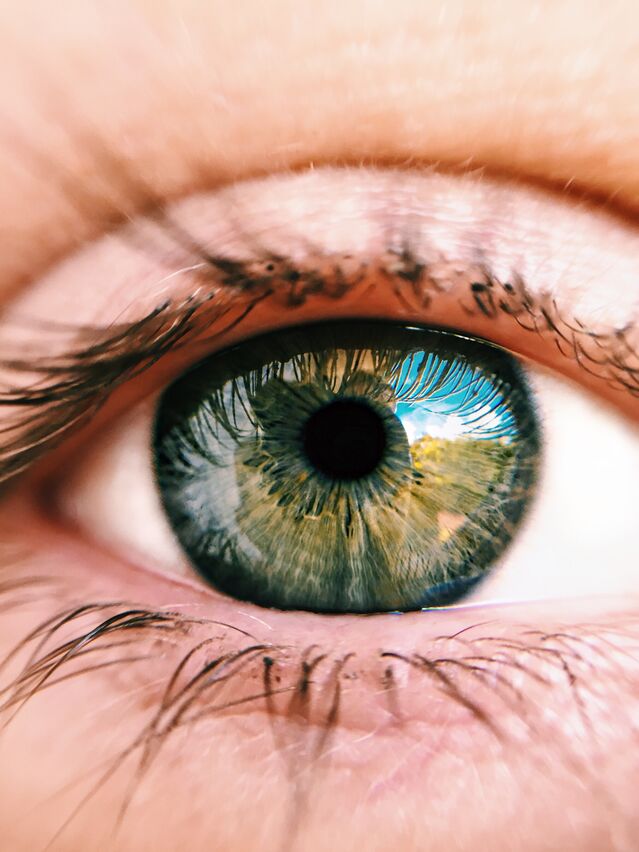
Blinking is one of the most frequent human activities, typically occurring every two to 10 seconds or about 10 blinks per minute. It has long been understood that blinking has protective effects for the eyes, providing a lubricant for the eyeball to keep it from drying out, and also protecting the eye from irritants in the environment.
However, research suggests that blinking serves additional purposes beyond protecting the eyes. Some evidence of this comes from the fact that blinking rates vary considerably across tasks. When we are reading, we tend to blink much less often—about four times per minute; when we are engaged in a conversation, we blink more often—up to thirty times per minute. The large variability in blinking rates across different tasks suggests that there may be cognitive costs as well as benefits to blinking.
Clearly, blinking imposes costs on visual processing. During a spontaneous blink, our pupils are partially or completely occluded for about 300 ms, causing us to miss any visual inputs occurring during that time window. To put this in context, we are normally able to process visual content in just 60 ms, meaning that we may miss up to five distinct visual events that occur during a blink. However, we are usually not conscious of these visual disruptions, as the brain suppresses our awareness of the large changes in the visual input during blinking so that we are not distracted by the closing and opening of the eyelids. Nevertheless, the cost to visual processing during blinking is considerable.
On the other hand, new research suggests that there may also be benefits to blinking that can be observed just after the completion of a blink.
In a recent paper, researchers Jit Wei Ang and Gerrit Maus investigated whether there are measurable benefits in visual processing just following a blink. To do this, they developed a rapid serial visual presentation (RSVP) task in which participants had to identify a target item among a stream of distractors presented every 60 ms; for example, a numerical digit among letters, or a picture of an animal among pictures of scenes. Across different conditions, participants were either (1) prompted by a beep to initiate a voluntary blink, (2) prompted by a beep that there would be an "artificial blink" (produced by shutter goggles) or (3) shown the stimuli with no blinks at all. For example, in Experiment 1, a sequence of letters was shown every 60 ms, with a single digit appearing somewhere randomly in the sequence. After the four-second trial, participants then had to identify which digit was shown, such that performance could be measured as percent correct identification.
In trials without blinks, participants did quite well in the task, identifying about 75 percent of the number targets in Experiment 1. Most critically, the researchers found a significant performance boost following both natural and artificial blinks that could not be attributed to any stimulus characteristics. Specifically, they found that number identification performance rose to about 86 percent during a short time window following a natural blink, with peak performance occurring about 180 ms following the end of the blink. A smaller but also significant boost in performance was also observed in the artificial blink condition, with performance rising to about 82 percent following the shutter-glasses-induced blinks.
Comparably, in Experiment 2, no-blink performance in identifying animal targets was about 58 percent, but this rose to 67 percent about 180 ms. after natural blinks. No such boost was observed for artificial blinks triggered by the shutter glasses.
Given these results, Ang and Maus concluded that blinking can in fact lead to significant perceptual boosts during a small time window following the blink. This is consistent with previous findings that suggest people are able to modulate their blinks strategically in response to the statistics of the input, blinking more often when there is a lower probability that a target event will appear (Hoppe et al.. 2018). These results are also consistent with research by Nakano et al. (2009) that showed: when people watch a movie, their blinks tend to occur more often during movie segments where no meaningful actions are occurring.
Although the studies by Ang and Maus examined "voluntary" blinks (as opposed to unconsciously generated blinks), they argue that the results should generalize. This is because the temporal dynamics of voluntary and involuntary blinks are nearly identical.
Therefore, as the researchers conclude, there are likely everyday benefits to blinking at particular times, just before an important visual event occurs. Aside from replenishing our eyes with moisture and protecting them from environmental irritants, eye blinks seem to reset the visual system, facilitating visual processing for the information that immediately follows.
"Occur" - Google News
December 01, 2020 at 12:35AM
https://ift.tt/3miVHih
The Surprising Benefits of Blinking on Visual Perception - Psychology Today
"Occur" - Google News
https://ift.tt/2Qqpsjw
Shoes Man Tutorial
Pos News Update
Meme Update
Korean Entertainment News
Japan News Update
Tidak ada komentar:
Posting Komentar